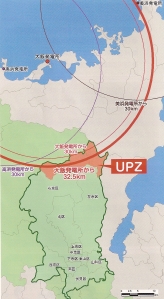” TOKYO — The operator of the Fukushima Daiichi nuclear power plant stood ready Thursday to inject boric acid into one of its most heavily damaged reactors after it found steam emanating from the reactor building. The preventive measure would stave off sustained nuclear reactions in the reactor’s damaged core, though officials stressed that such reactions were a remote possibility. …”
Daily Archives: July 18, 2013
Responders to Japanese disaster sue company — Stars and Stripes
I was not able to access the Stars and Stripes website to read this article, but I downloaded a pdf version for your access. I highly recommend you read it.
” SASEBO NAVAL BASE, Japan
— Five months after participating in humanitarian operations for the March 11, 2011, earthquake and tsunami that led to nuclear disaster in Japan, Petty Officer 3rd Class Daniel Hair’s body began to betray him.
He had sharp hip pains, constant scabbing in his nose, back pain, memory loss, severe anxiety and a constant high-pitch ringing in his ears as his immune system began to attack his body. The diagnosis, he said, was a genetic immune system disease, which on X-rays looked to have made his hip joint jagged and his spine arthritic. He was put on a host of medications and eventually separated from the Navy job he loved.
Hair believes radiation is the cause. He is among 50 sailors and Marines in a growing lawsuit against Tokyo Electric Power Co., alleging that Japan’s nationalized utility mishandled the meltdown at the Fukushima Dai-ichi nuclear plant that spewed radiation into the air and water.
Other servicemembers have been diagnosed with leukemia, testicular cancer and thyroid problems or experienced rectal and gynecological bleeding, the lawsuit says. Hair said one of his friends, a fellow USS Ronald Reagan shipmate, was diagnosed with a brain tumor. … “
“The Kyoto City Government’s Protection Plan for Nuclear Disasters”
The publication of this booklet shows that the Kyoto city government is finally taking this possibility seriously. On the other hand, it also shows that such an accident is a real possibility in Kyoto given that the two O(h)i reactors are located near an earthquake fault line.

